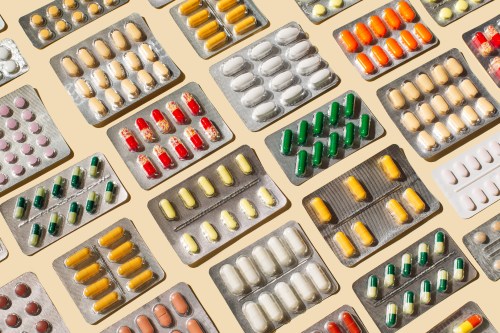Triclosan may no longer be involved in your shower routine, but you haven’t heard the last of the controversial anti-microbial. The FDA banned its use in soaps a year ago (it was previously in more than 90 percent of antibacterial products) after deciding it’s not more effective than the plain, regular stuff—and potentially might do more harm than good. But triclosan is still on store shelves, notably in your toothpaste.
Despite the chemical being linked to hormonal issues and problems with your gut, a new study found it’s still in many popular toothpastes and can accumulate on your toothbrush bristles for weeks, continuing to release the compound into your gums, which quickly absorbs it into the bloodstream.
After brushing, there was plenty of triclosan left on the bristles, even after switching to a triclosan-free toothpaste.
In the study, researchers simulated a brushing routine with 22 of the best-selling toothpastes—including six that contain triclosan. After brushing, there was plenty of triclosan left on the bristles, even after switching to a triclosan-free option for subsequent use. But it gets worse: The brushes ended up having 7 to 12.5 times the amount someone would come into contact with simply from brushing their teeth once, and buildup lasted for up to two weeks after making the switch. #Yikes.
So what can you do to ensure the chemical doesn’t get into your system? The only way is to completely start fresh, with a new brush and triclosan-free toothpaste—but read the labels carefully, as some heavy hitters are proudly peddling the anti-microbial-laden pastes.
In response to the study, Colgate told Time the company still uses the ingredient in its products to “fight harmful plaque germs that can cause gingivitis” and does not “consider oral exposure to triclosan toothpaste to be a health risk.” But considering all the recent findings, is it really worth the risk?
If you’re worried about gingivitis, you don’t need the chemical to prevent it: According to the Cleveland Clinic, nearly all cases can be prevented or reversed simply by practicing proper plaque control, like getting a cleaning twice a year, brushing your teeth, and flossing—no triclosan needed.
Plus, Marvin M. Lipman, MD, told Consumer Reports it’s better to be safe than sorry: “There’s enough concern now with triclosan safety that it makes sense to avoid it on your own, even if there is some demonstrable value at reducing plaque and gingivitis.” So check the label on your toothpaste and see if it contains the chemical. And if it does, consider tossing it.
Here are some common mistakes you could be making with your oral-care routine. Also, this is what your tongue can tell you about your health.
Sign Up for Our Daily Newsletter
Get all the latest in wellness, trends, food, fitness, beauty, and more delivered right to your inbox.
Got it, you've been added to our email list.









